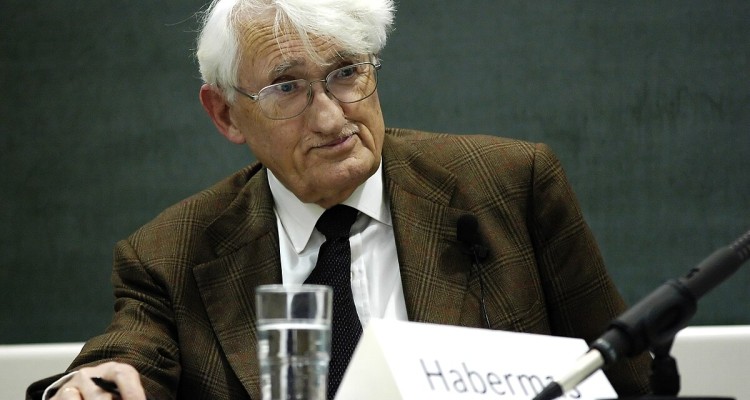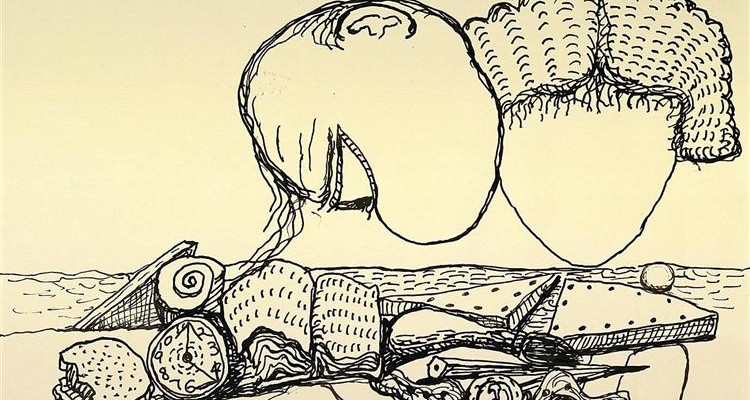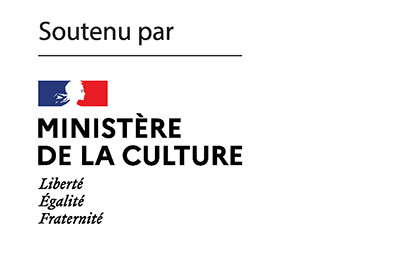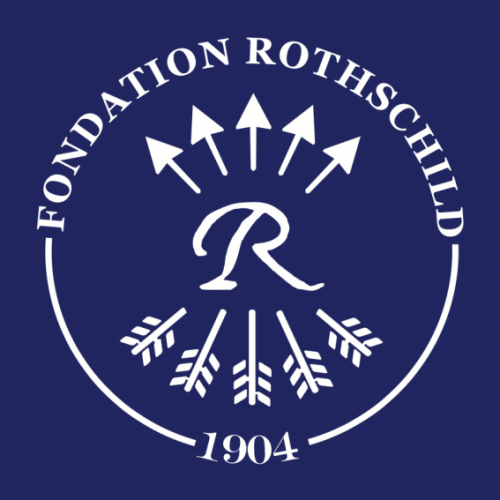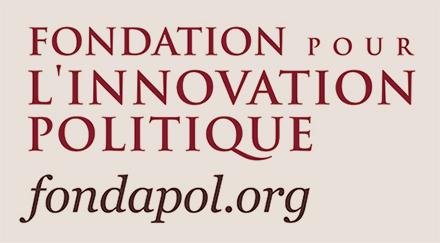What is it that explains the ability of anti-Zionism to unify protests in the name of emancipation, and the fact that Israel has become the focal point of criticism from universities? In a measured and enlightening text, Bruno Karsenti takes a step-by-step look at the language of student protests, to gain a perspective on the political reconfigurations that lie ahead. In this language, two notions are opposed as irreconcilable: the nation, the only historically realized political form of collective and individual emancipation, and an apolitical fetish – the solution to all ills – autochthony. A drifting critique haunts the university, which instead of reflexively reclaiming the potential of the political form nation – which has undeniably led to crimes – opposes it with the fantasy of a pure, authentic people. Unbeknownst to the students, it is the old ‘Jewish question’ that finds a new formulation, around the unthinkable persistence of the Jewish people in the modern nation.
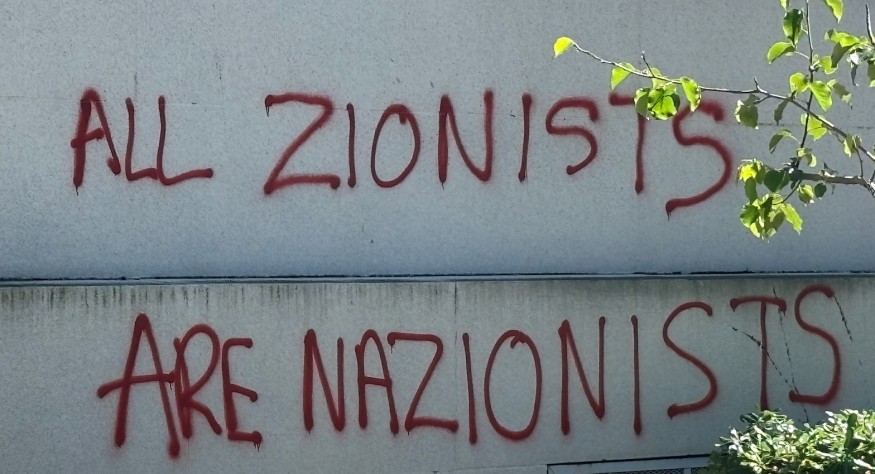
In the countries in which we live, the university is the place where critical thought can be formed and expressed, at a distance from religious, political and economic powers, the kind of thought that can found and articulate protests against injustice. In the long term, it was born as the loosening of a stranglehold, starting with the politico-religious stranglehold of the State and the Church, and sheltered from the powers of the market. A pocket of reflection on reality – on laws, on facts, and more generally on the course of the world – was built up in this way. Gradually, it has become essential to the functioning of any democracy worthy of the name.
This is a vital asset for us. Any attack on democracy is signaled by the fact that this place is threatened and reinvested by the instituted powers, that they seek to curb the knowledge and reflection that unfold there. This is inevitably what happens in authoritarian states (religious or otherwise). Various means are used in such cases, notably the curtailment of academic freedom for teachers, or the repression of student mobilizations, the exercise of their freedom of expression. Of course, student expression has nothing to do with academic freedom. However, insofar as students are an integral part of the university community, the academia, the opinion they express is more than just an opinion. The knowledge that students are expected to acquire, their participation in the argumentative discussion that is the rule in this community, mean that they must be credited with a high level of critical awareness, i.e., a relatively high level of perception and understanding of questions of justice. This is because, in the space where they study and receive instruction, these issues are examined rationally, free from interference and in complete freedom of mind.
Ecological struggles, women’s struggles, or those against racial discrimination, police violence or neoliberal policies, pale in comparison to the anti-Zionist struggle. No other cause has managed to provoke such a momentum in the democratic hotbed of critique that is student youth.
Anti-Zionism
The current student mobilizations are a sign of this vitality and freedom. They must be heard and evaluated in the light of what they are supposed to be: the critical expression necessary for our societies to exist and function democratically. What we see is that they have found their center of gravity, and are proclaiming it. They are organized around anti-Zionism, a theme that brings them together and gives them surprising vigour. Sometimes they include teachers, sometimes not. Sometimes other, non-academic players join in, with all the attendant risks of surreptitious influence, interference, capture and misappropriation. Only a precise ethnography can establish the genesis, composition, mode of construction and organization of these movements. And only time will tell how important the phenomenon is.
But while we await such data, one point is already remarkable: ecological struggles, those for women and sexual minorities, or those against racial discrimination, police violence or neoliberal policies, pale in comparison with the anti-Zionist struggle. No other cause, on the many occasions in the recent past, has managed to provoke such a momentum in the democratic hotbed of critique that is student youth. That the radical left, at a time when it needs to find a new lease on life, should see this as a spark to latch onto is hardly surprising. Cries of instrumentalization are undoubtedly true, but ultimately of little interest. A social trend is expressed, and politicians either follow or denounce it, either stir it up and seek to appropriate it, or condemn it and turn it into a scarecrow; that’s all there is to it. This is the way politics works.
More interesting, but also more complicated, is to ask what this tendency is all about. Its objective foundation is the salient drama of the moment: Israel’s war in Gaza, heavy in civilian casualties on the Palestinian side. The students’ struggle is motivated by the suffering of these people, whom they consider Western governments to be complicit in, if not by their active support for Israel’s military action, then at least by the verbal nature of their criticism. According to the protesters, this criticism is not accompanied by any real action. Yet action is the order of the day, not the empty words and discussions suspected of being delaying tactics in the present emergency
The framing adopted by the mobilizations could not be clearer: Israel is a colonial, racist and genocidal state, whose victims are a people oppressed, starving, destitute and in resistance.
This action obviously requires a stable framing of the situation in which it takes place. Nor is it surprising that in the acute moment of mobilization, this framing is erected upstream and placed beyond discussion. The one adopted by the mobilizations could not be clearer: Israel is a colonial, racist and genocidal state, whose victim is an oppressed, starving, destitute people in resistance. The movement has “pillars” and “demands”. At both poles, its anti-Zionism is on display. That’s where its strength lies: secure in its position, sure of the facts, it aims for a specific end and considers it attainable. It’s all very well to remind the movement of the need for a balanced historical, sociological and political analysis, and to try to bring it back to the reflective and scholarly vocation of the place from which it speaks, but to no avail. For them, the time has come to express one’s own critical convictions. The discussions they organize are designed to support and display this conviction. The movement wants to put an end to Israel, a state whose existence is based on the greatest injustice, i.e. the one most likely to arouse indignation today.
This also explains the movement’s relationship with war. As a revelation of the injustice constitutive of Zionism, the war is for it just as clearly an indication of the path to take to abolish this injustice. Certainly, an immediate ceasefire is called for in Gaza. But it is being called for as a stage in the war, in which the aim is to participate by whatever means are available, at a distance from the zone of fire: the boycott of Israel, the prelude to its annihilation. With this act, we believe we are standing by the Palestinians, fighting with them against their enemy. Not by demanding that Israel change its ruling party and its policies, but that it disappear as a Jewish state, as a Zionist state, living as it does off the oppression of a people.
The two poles of the divide
The current ideological conflict in the Western world, as expressed in the university as a place of science and reflection – for it is different in other places, such as the political arena – is not, as we can see, between pro-Israelis and pro-Palestinians. It is between all those who consider that there is a State of Israel whose destruction is inconceivable, and those who consider that there is a State of Israel whose destruction is the point of convergence and exaltation of all struggles.
Does this mean that the divide is between Zionists and anti-Zionists? Of course, but we still need to agree on the words. What we see is that all those who consider that the destruction of the State of Israel is not conceivable are not necessarily Zionists, in the sense that they would be characterized by their adherence to this national ideology born in the 19th century, which came to fruition with the creation of the State of Israel. They may view it with sympathy or antipathy, but the point lies elsewhere: precisely in the element of realization of this ideological trend. Let’s say they start from the observation that a process of nationalization guided by Zionism has led to the formation of a stato-national entity called “Israel”, which is part of the world order, an order within which conflicts are reasoned. That these conflicts involve competing national claims to statehood is obviously part of the problem’s coordinates. This is how the Palestinian cause is integrated: its existence as a national cause is acknowledged, and as such, it is directed towards the acquisition of a state. The ways in which this element is integrated can vary, and it is this variation that determines the different positions present: they can be pro-Israeli or pro-Palestinian. And in this, they can clash harshly. Nevertheless, they remain within the same problematic and use a common language.
The “Zionists” they oppose in the universities are anyone who utters the name “Israel”. Which, of course, includes a lot of people.
But in the other camp, which has its epicenter in the university, the thinking is quite different: we oppose Zionist realization. We are anti-Zionist in that we attack Zionism as it has actually been realized, i.e., the Zionist ideology insofar as it founds and sustains the existence of a certain state. The argument is anti-Zionist, in the sense of anti-Israeli.
The nuance is worth noting. When this camp expresses itself in the West, it conforms to the usage of a large part of the Arab-Muslim world and speaks of a “Zionist entity”, i.e. it refuses to pronounce the name that this state has given itself and which has been registered by the international community. Yet refusal has a meaning of its own. It means refusing to allow Zionism to take the form of a nation-state. It is this form that is rejected, insofar as it has been aimed for and achieved by the Jewish national movement that is Zionism. It is this process that is blamed for the greatest injustice of all, namely the violation of Palestinian rights. Unlike in the Arab-Muslim world, the rejection is not essentially addressed to the international community, but to the Jews, who are told that Zionism must not be realized, because this people should not have nationalized itself in this way, and thus acceded to the name of state. The rights of the Palestinian people, then as now, forbid this. In short, anti-Zionist Westerners forbid Zionism as it has come to be, which is why they banish the name Israel from their discourse. By extension, they ban anyone who adopts this point of view, whether Jewish or non-Jewish. The “Zionists” they oppose in the universities are anyone who utters the name “Israel”. Which, of course, includes a lot of people.
The two camps we’ve just described – the one that interprets the situation as a conflict between two national assertions of different natures, whose respective legitimacies are put to the test in the war and its possible crimes, and the one that takes the side of a people against a nation-state whose existence is reconciled with the violence it inflicts upon it – certainly permeate Western democratic societies as a whole. We can see it progressing and reproducing itself, in a more or less pronounced style, in many areas. In Europe and across the Atlantic, however, it is in the academic sphere that it finds its most spectacular expression. While everywhere else, the conflict tends to be read in terms of the first grammar, which pits pro-Palestinian against pro-Israeli, the academic sphere gives pride of place to the second, that between “Zionists”, in the broad sense of those who say “Israel”, and anti-Zionists, who oppose the reality that bears this name and all those who pronounce it.
That’s what we need to question: the hegemony to which this second form of grammar aspires, at work in the university. Whereas the former is much more common, and is in widespread use among those in power and in public opinion, the situation is quite different in the university, the place where social and political reflection is supposedly the most advanced, the one that is most directly informed by the scientific analysis of facts, and is entitled to claim to guide the best possible policy.
People versus nation
The real problem is not why anti-Zionism has its main breeding ground in the academic world, and why we should be alarmed that it is so dominant there. In fact, this is not true. At university, whether among students, administrative staff or teachers, positions vary widely, and the trend towards anti-Zionist mobilizations, however demonstrative, does not trigger mass movements, either within the microcosm or beyond. On the other hand, outside this space, other sources, both religious and political, feed anti-Zionism very directly. As a result, anti-Zionism has become a major transnational political current, active all over the world. In the non-Western world, it often reflects majority opinion and galvanizes crowds. Nothing like that happens here.
For anti-Zionist movements, it’s not a question of a conflict between two different nationalization processes, or of attributing responsibility for the incompletion of one and the resulting situation of inequality. The Palestinian people are accepted as a people, not as a nation in the making, called upon to organize itself socially and politically to give birth to a state.
What is significant, however, is that our universities have the privilege of producing and disseminating a singular reading of the conflict: a reading that goes right back to the existence of Israel, and requires us to take a stand for or against it. But above all, it’s a reading that second-guesses the alternative between pro-Israelis and pro-Palestinians, by making the pronunciation of the name “Israel” the truly decisive issue, the one that makes people fall on one side or the other of the fundamental divide, where the question of justice is touched at its nerve center. Let’s insist: where it is more acute and more obvious than when it comes to any other fact of proven domination and fault committed by any actor.
How can we explain such a strange phenomenon? How can we account for the attraction of academic criticism, not simply to the Middle East conflict, but to this singular formulation and understanding of that conflict? What is it that makes part of this community so ready to seize upon this conflict to express its most pressing demand for justice, and to define it precisely in this way, as a conflict between a people to be defended and a state to be abolished?
The Palestinians are a people. That’s what nobody – apart from Zionist extremists who don’t meet the minimum conditions for participation in the discussion – disputes. They are, just as the Jews are. But in the conflict, the Jews appear under a name that is a state name. They appear as “the Israelis”, members of the State of Israel, belonging to the Israeli nation, which includes Jews and non-Jews, including Palestinians. At the same time, this nation is nonetheless the product of a dynamic of nationalization that has a Jewish character: Zionism. And it is Zionism in the making that coincides with the creation of a state that is not – as the 2018 law promoted by Netanyahu is wrong to state – “the nation-state of the Jewish people”, but the state created by a people who nationalized themselves in the modern mode, and who in nationalizing themselves in the modern mode, gave birth to a plural and democratic national society, comprising a Jewish majority and non-Jewish minorities, in other words several peoples.
As for the Palestinians, a people without a state, they have long been engaged in a similar process of modern nationalization, which began at the end of the Ottoman Empire, but which, for both internal and external reasons, has so far failed to achieve the same result. At present, in a war started by one of its politico-religious movements, this people is seriously affected and suffers civilian casualties which it is right to be indignant about and to try to counter.
The word genocidal is demanded, as a matter of accepted legal forcing. A word that is held dearer than anything else, because it says exactly what it meant o be said: that a state is killing a people.
But as we can see, to describe things in this way is in any case to engage in the first, most common grammar, and not the one whose hegemony is seeking to establish itself in the university. As far as anti-Zionist movements are concerned, this is highly inadequate, since it’s not a question of a conflict between two different, opposing and desynchronized nationalization processes, nor of attributing responsibility for the incompleteness of one and the resulting situation of inequality. Here, the Palestinian people are accepted as a people, not as a nation in the making, called upon to organize itself socially and politically to give birth to a state. It is grasped on the basis of the legitimacy in principle conferred by its autochthony. Belonging to the land, being anchored in its environment and being purely present to itself are enough to qualify it – just as it is the status of a stato-national entity affected by artificiality and the will to power that is enough to discredit Israel, i.e. to drop its name.
In this vision, Zionism is racist, colonial and genocidal by its very realization. It is so by the very fact of its realization. That’s where the initial framing comes in. There is no discussion of Israel’s colonial and racist character. Above all, the word genocidal is demanded, as a matter of accepted legal forcing. A word that is held dearer than anything else, because it says exactly what it meant o be said: that a state is killing a people. Israel’s existence implies the cluster of negative traits that culminate in genocide. It implies it originally, against the Palestinians as a people rather than as a nation.
Pending criticism
We don’t emphasize it enough: today’s mobilizations are very different from the national struggles that accompanied decolonization in the 60s and 70s. The era we’ve entered since the 90s, while certainly distancing us from the post-World War II era and the post-Holocaust consciousness that emerged from it, is also distancing us from the era of anti-colonial and anti-imperialist liberation struggles. The concepts of self-determination and national autonomy do not form a central axis, and if a Third World motif does seem to be replayed in what’s happening today, it’s with a very particular connotation. So much so that the historical references to which the movement tries to cling and from which it seeks to derive a certain aura (Vietnam, Algeria…) end up sounding hollow.
Today, the main target of criticism lies at the heart of nationalization processes. What is being challenged is whether these processes can in themselves be guaranteed vectors of emancipation for individuals and peoples.
This inflection, it should be stressed, is not pathological in itself. It is the result of a sharper critical awareness and knowledge that was nurtured and developed at university. The need to look inward in this way arose from a heightened awareness of the problems of integrating minorities of all kinds within nation-states, or of the growing interdependence between these states, with the transnational damage it causes (migratory, health, environmental…). We have done so by revisiting the past – and thus producing a new historiography – and by scrutinizing the present more intensely – along the combined paths of law, economics, sociology and anthropology, social sciences whose methods have had to undergo profound transformation from the moment when state and national frameworks, confronted with their contradictions, appeared to be precisely what needed to be re-evaluated and re-examined.
As we became more self-critical and attentive to the culpable unthinking of past and present Western politics, we were struggling to catch up with what, elsewhere, was taking on the aspect, in several hotbeds that had ignited and fed off each other, of nationalization processes of a democratic type.
But the effort required for such advances has its downside. For it is accompanied by doubts about the emancipatory scope of what are presented as expressly national struggles. If the basic grammar of nationalization is put back on the drawing board, then the consequence is inevitable. The phenomena associated with the constitution of peoples into nations – that constitutive movement of modernity in which the acquisition of democratic rights is at stake – are no longer taken for granted, but questioned in their foundations. This self-reflection is right and necessary, without which the modern experience itself ceases to continue and denies itself. But the uncertainty and indeterminacy weighing on the new framework to be reconstructed, beyond the one whose limits are being scrutinized and identified, inevitably undermines criticism. Criticism then runs the risk of becoming lost in the simple denunciation of these limits, at least as long as it is not coupled with another effort to redraw collective belonging and new, more complex and broader forms of solidarity, in which emerging expectations of justice can be received, addressed and resolved.
A sign of this difficulty over the past decade can be seen in the way Western political consciousness reacted to the Arab Spring, and to its tragic peak in the failure of the Syrian revolution. First and foremost, of course, there was the half-heartedness, to put it mildly, of Western states and their representatives, and the compromises made by political leaders in response to geopolitical agendas and interests. But what we must note is the weak commitment of the critical conscience in this respect, and the weak echo it gave to the emancipation movements that were taking place. It’s as if it couldn’t find enough resonance with its own tendencies to commit itself en masse and articulate its protest clearly. It was as if, as we became more self-critical and attentive to the culpable unthinking of past and present Western politics, we were struggling to catch up with what, elsewhere, was taking on the aspect, in several hotbeds that had ignited and fed off each other, of nationalization processes of a democratic type.
It’s no coincidence that the massacres in Syria – some of which decimated large numbers of Palestinians – never triggered an academic mobilization comparable to the one we’re seeing now. It may be said that we didn’t expect the same respect for rights from the Syrian regime as we did from a democracy as close to our own as Israel, and that it’s natural for indignation to run high when a reflection of oneself can be seen in the action we resent. But if the question is really which emancipation movement we feel ourselves to be in solidarity with, the argument is worthless. For the criterion must lie in what we’re fighting for, without any other consideration. In the present, the indignation aroused by the suffering of the Palestinians is commensurate with the echo it meets in some of the most powerful inclinations of Western critical consciousness. And it’s clear what it’s all about: the Palestinians’ struggle is primarily about the violated identity of a people, the fact that it has been dispossessed of itself and its land by another people, which has become the occupier and oppressor precisely by becoming a nation and acquiring the corresponding state in the process. In short, in the minds of the protesters, this happened through the culpable national movement that is Zionism, which has now reached the stage of its realization.
Zionists are basically all those who reason in national terms in their efforts to deal with the conflict, at a time when it has become eminently problematic to do so, and when no alternative framing is provided by reflection. Thus, Zionism has become the bane of critics who have lost their bearings.
By denouncing the State of Israel as colonial, by affiliating Zionism with the kind of imperial colonialism championed in the 19th century by the European powers, then relayed by American imperialism in the following century, this line of reasoning is put in place. A closer look reveals its weaknesses and short-circuits. It only works by systematically erasing all the elements that exclude real Zionism from the schema into which we want to fit it, namely all those that link it precisely to a national liberation movement – that of a people scattered between East and West, also attached to this land of Palestine where its presence had never been extinguished over the centuries, and whose return movement was fuelled by successive waves, not of colonial exploiters in search of profit, but of refugees in search of shelter, first from Europe, then, in the 50s, from the Arab countries that had expelled their Jews (a flow virtually never mentioned in critical discourse).
But these considerations carry no weight in academic anti-Zionist grammar. By a pathology that affects even the most advanced thinking, some of the institution’s actors opt for the most obstinate dogmatism and disfigurement. In such cases, the image of what they wish to see is too imposing and too attractive to resist.
Recently, on the wall of a central hall at UC Berkeley, one could read this bizarre message: “All Zionists are Nazionists”. Beneath the unsurprising equation of Jews with Nazis, a classic antisemitism trope, another word can be deciphered: aren’t “nazionists” rather “nationalists”, all of them? This is certainly the case for those involved in the mobilization. Zionists are basically all those who reason in national terms in their efforts to deal with the conflict, at a time when it has become eminently problematic to do so, and when no substitute framing is provided by reflection. As a result, Zionism has become the bane of critics who have lost their bearings, unable to politicize themselves other than by piling on to the same target all the features of what they consider to be hateful. The fact that this abstract negativism is mainly about morality, and not at all about politics, is something that mobilization sometimes admits and boasts about. In this way, it believes it is adorning itself with a surplus of legitimacy. But in truth, it merely attests to the seriousness of the crisis of which it is a symptom. A crisis that consists of a failed politicization, coupled with a proud refusal to want to know anymore. A crisis of knowledge and politics, inseparably linked, in which the university is showing signs not of its destruction at the hands of external powers that threaten it, but of its self-destruction.
Jewish people
Every successful mobilization is driven by antithetical affects. Love and hate, enthusiasm and pain, laughter and tears are all part of the picture. What’s important is not so much to see which way the scales tip, but to analyze how these affects fit together, to probe their mixtures and understand what they’re made of. Here again, this can only be done in earnest through a comprehensive sociological investigation inside the movement. This investigation is all the more arduous in that its potential sites are multiple and heterogeneous, spread across several countries and continents, and marked by differences in the composition of student populations and the types of institutions involved.
What we can say right now, however, is that the motivation is powerful everywhere, as long as it manages to focus on the terms we’ve seen: on the one hand, a people seeking for itself a justice that has always been denied them, and on the other, a nation-state founded entirely on the denial of this justice. On one side the “Palestinians”, on the other the “Zionists”. Between the two, the ongoing war, which the protest movement senses has entered its final phase since October 7. At stake is who will finally prevail over the territory that stretches “from the river to the sea”. Here again, the slogan speaks volumes, since it has the double advantage of taking into account only natural, and not stato-national, borders, and of endorsing the perfect congruence between a people and its land, the only fact to which one unreservedly adheres in order to justify one’s chosen side.
n this way, this hyperfixation fulfils its function: it sparks the imagination of what the world could be like if, by chance, it no longer existed. All the ills of the moment can be translated into a single word: Zionism.
Zionists draw all the fire of criticism towards themselves. Positively, this means that all the wishes for a resolution of injustice that we feel intensely, without however ever being able to discern the social and political form of existence in which such a resolution might well occur, find in this concrete and determined situation a hope of fulfillment. Hence the prodigious synthesizing effect of the struggle targeting the “Zionist entity”. Here, the gesture becomes possible, but through a simple, clear and accessible negation. The moment Israel disappears – that obstacle made up of a nationalized people and a consistent state – the horizon opens up.
As for the exact definition of these evils, and the way in which they are apprehended, this varies from place to place. From one side of the Atlantic to the other, the groups involved and their relationship to the state and the nation are not the same, and the issues do not have the same content. On the gradient of intensity, the United States appears to be in the vanguard, followed by European countries such as Switzerland and Belgium, while France is more of a diligent pupil. Its greatest efforts to follow in its footsteps are made by its prestigious institutions. Everywhere, however, the backdrop and lexicon are stable. Zionism castigates colonialism and racism, but also extractivism and productivism, and even male domination and sexual violence. What’s important is not that a link with Zionist ideology can be proven in each case – the contortions are obviously absurd – but only that we perceive the conditioning effect of anti-Zionism in the first instance. And indeed, we understand to what extent the disoriented critic is justified in seeing in it his most entrenched blocking point: a national emancipation achieved, which effectively leaves a blatant injustice to a clearly identifiable people.
As for the range of emotions, the same notes recur. First, there is the suffering shared with the Palestinian victims, civilian and military alike, while the Jewish civilian victims are erased, and their mere mention is taken as an offense to the struggle. And there is a simple, pure joy at the sight of the broken barriers and escapes made possible for the killers and rapists who were free to act during the long hours of October 7. Finally, there’s the relief of having finally succeeded in formulating, with anti-Zionism, what remained unformulated. The moment visibly gave the demonstrators the breath they had long hoped for, crushed as they were by the weight of a critical task for which all the instruments were lacking. Ultimately, these feelings culminate in the enthusiasm felt at the prospect of putting an end to Israel. This is their political gesture, their passage to action. It’s their most cherished goal.
An end to Israel and Zionism, but certainly not to the Jews, they make it clear. This is the point at which hatred is summoned to stop, by a self-control all the more scrupulous as accusations of antisemitism are frequent, particularly after the acts of October 7 and the support, accompanied by reservations and regrets among the most cautious, which was given to them. A “trial of intent” is the response invariably given to these accusations, when the going gets rough, whether it’s words that slip out, blows that fly, insults that erupt, or even comparisons so crude that they easily reveal the attack on Jews that actually motivates them – “Nazionist” is a precipitate example, but we keep seeing more subtle and pernicious ones in the alerts to the genocide decreed in progress.
The mobilizations include self-proclaimed Jewish students. They occupy a place of honor insofar as they embrace anti-Zionism, declare their absolute solidarity with the Palestinians, deny that October 7 had the slightest antisemitic dimension, and work on the crucial task of discriminating between being-Jewish and being-Israeli…
Let’s be fair: “Death to the Jews” is not a welcome slogan in Western anti-Zionism, whereas it is commonly and unashamedly used in its non-Western version. In academic anti-Zionist protest, its violence is even outlawed. The Zionists are the designated and characterized enemies, not the Jews. To the Zionists, it’s a matter of waging war – the academic boycott is, we repeat, the recommended participation in waging war “by other means”. But the war is not being waged against the Jews. There can be no war between peoples, between pure peoples.
Precisely what is it about the Jewish people in the academic anti-Zionist argument? Clearly, there can be no direct comparison between them and the Palestinian people. The difference between the two is first and foremost a difference of time: the Palestinian people are victims today, but they are victims of the present action of the State, which, it is argued, is using the past suffering of the Jewish people to justify itself. The protesters do not deny this past suffering – negationism has no place in the movement. If they are willing to see antisemitism today, it is in a residual mode. It is not significant enough to say that the Jewish people are victims today in the same sense as the Palestinian people. That said, as a people, the Jewish people are no less pure than any other. Any people’s identity is respectable from the point of view of academic criticism, and any ethnocultural determination, distinguished from the dynamics of nationalization that make up the tragic history of modern politics, is positively perceived and valued.
The mobilizations thus include self-proclaimed Jewish students. They occupy a place of honor insofar as they embrace anti-Zionism, declare their absolute solidarity with the Palestinians, deny that October 7 had the slightest antisemitic dimension, and work on the crucial task of discriminating between being-Jewish and being-Israeli, between authentically Jewish ethics – Levinas, truncated by anything he may have said about Israel, is not an unwelcome reference – and Zionist ideology. This is their own contribution, and it’s a very valuable one: it helps to reconstruct from within the ideological corruption princeps, Zionism, hunted down in all its aspects. It shows that the Jewish people, no more than any other people, is not spontaneously oriented towards the unequal, domineering and discriminatory integration that is deemed inescapable as soon as the mold of the nation-state is imposed.
This is also why, like any other minority, this people sometimes suffers the negative consequences of the stato-national construction accomplished by other peoples. These culminate in racism, of which antisemitism is then, in this vision, only a subspecification. But the distinction between racism and antisemitism is irrelevant in this case, and is banned by academic anti-Zionist criticism. There is nothing very damaging in this, we think, insofar as any complaint from its victims is admissible in law, provided that the acts denounced are not confused with the expression of anti-Zionism, and can be reversed to resurgent reactionary tendencies, condemned without hesitation. From this point of view, antisemitism, treated as a subspecies of racism, can only be right-wing (or the sign of an unfortunate relapse to the right by misguided leftists). To assert the contrary and to insist on making a distinction is an unacceptable derogation from the convergence of struggles that the fight for the Palestinian people is currently ensuring.
But then, no matter what we say, an asymmetry remains: Jews, insofar as they say there is antisemitism distinct from racism, are suspected of dangerously defecting from what mobilization holds most dear. Let us emphasize: this time, they are doing so as members of their people, and not as putative supporters of the formation of a nation-state that calls itself Jewish, i.e. as Zionists or crypto-Zionists.
What exactly are Jews saying when they say that antisemitism is targeting them, and that today, in the post-1945 Western world, it is growing at an unprecedented rate? And what is it about these remarks that is particularly incompatible with the critical discourse that finds its high point in university mobilizations?
What are they saying? They’re saying that antisemitism does exist, and that it’s a specific pathology of modern societies, both Western and non-Western, that needs to be treated in its own right. They reveal different versions of this phenomenon, one of which, particularly murderous, was realized on October 7 in the actions of Hamas; and others, less violent but just as manifest, have been rekindled in the reactions provoked in the West by October 7. They claim that we are in the midst of a major antisemitism movement, on a scale not seen since the Second World War.
These Jews, these members of the Jewish people, are reporting what they see. So we have to ask the most awkward question of all: what exactly are Jews saying when they say that antisemitism is targeting them, that it’s not the same as the racism affecting other minorities, and that today, in the post-1945 Western world, it’s growing at an unprecedented rate? And what is it about these remarks that is particularly incompatible with the critical discourse that culminates in university mobilizations?
The antisemitism in us
Modern antisemitism is a European evil. It is inseparable from the formation of modern nation-states. Its driving force is paradoxical: it stems not from the theologically-motivated trial for separation brought against the Jews by traditional anti-Judaism, but from the supposedly corrupting integration of this particular minority into the national body, as long as states committed themselves to emancipating its members, i.e. granting them the civil and political rights of all. Ancient anti-Judaism undoubtedly carried over into modern antisemitism: it communicated to it patterns that it could reinvest, some of which were already racist in character, such as the “blood purity statutes” of 15th-century Spain. But the evolution was no less clear-cut: national bodies, precisely by becoming internally equalized, gave rise to anxiety and hatred focused on an element that was integrated into them. At the same time, the condition of Jews was improving, and this improvement was producing a new kind of social discrimination and persecution, with new motivations and modes of action. In this respect, racialization – the racialization that concerned them specifically – was a function of social antisemitism, and not the other way around. The “Jewish race” was the construct designed to configure the social evil that antisemitism sought to combat, namely the Jewish people, who, nationalized in non-Jewish states, became its eminent internal corrupter. In short, underneath the race were the people, who were the real target.
With the Jews, what a part of the modern nation hates, is a facet of itself. They are the eminent bearers of the movement by which it was constituted, the “textbook case” on which it tested the promise that animated it.
This antisemitism was powerful and irrepressible, from the beginning of the 19th century right up to Nazism. It drew from both left and right. Since its vector was nationalism, when the theme of the nation shifted from the left to the right in the last third of the 19th century, antisemitism followed suit, but without losing its anchorage at the other pole. Similarly, it took the path of racism. It was all the more consonant with this great movement, which had its parallel source in the colonial conquests, in that it brought out an essential functionality: that of curbing social mobility, equalization and emancipation triggered by the States themselves, with the help of naturalizing fixations on which to base hierarchies and exclusions. Racism and antisemitism were inseparable from this point onwards, and structural features do indeed unite them. Yet they remain distinct, both in terms of the minority hated and the way it is hated.
For with the Jews, what a part of the modern nation hates, is a facet of itself. They are the eminent bearers of the movement by which it was constituted, the “textbook case” on which it tested the promise that animated it. For modern nations, to emancipate and integrate the Jews was to become truly integrated: to leave the premodern theological plane where separation prevailed, and to bring about in practice the change of an era. The Jews wanted this secular baptism, they too endorsed the modern promise. They said: “We can be modern as Jews, just as you are modern as Christians or secularists; even more so, we can be modern as secular Jews, bearing only a certain ethnocultural identity, within the nation”. But if antisemitism is the necessary and inevitable secretion of this movement, then the promise doesn’t tell the whole story. Hitler drew the most radical consequence of all: he made the opposite promise, that of a Germany and Europe without Jews. He declared it far more tenable than the other, and to a large extent it came true.
Post-Holocaust Europe gradually came to understand what had happened: for its part, it took up the fight against antisemitism, as a struggle that went hand in hand with anti-racism, but was nevertheless distinct from it, in that it was perceived, confusedly or lucidly, as touching on a relationship with oneself. We understood that antisemitism was in us, that it was part of us, not simply as an incomplete inclusion, a denial of rights for what we still decree as unintegrable, and which we discriminate, exclude and persecute for this reason – as is the case with racism – but as a completeness turned in on itself, an integration that requires the destruction of the evil it feels emerging within it, adhering to its fulfillment.
The Jewish people thus came to represent the point at which nationalization criticizes itself precisely as emancipating and integrating. It is re-imagined in the literal sense of its ambivalence. The word ambivalence, here, takes on a completely technical meaning – and not the somewhat floating one that flourishes in so many discourses today. Ambivalence is not exactly a contradiction. Freud gave the best definition: “Ambivalence,” he said of the relationship between sons and fathers, “is the point at which the negative and the positive coincide exactly, and reverse into each other in such a way that it’s impossible to ignore one side when it’s the other that’s being compared”. So it is with the Jews, for Europe and in Europe, consciously and not unconsciously, since 1945: they are the ones we know to have been, and still risk being, ambivalent towards, precisely insofar as we are modern. Like the victims of racism, they are the objects of a hatred that revives as social and political advances are made. But unlike the victims of racism, the hatred stems from the most positive aspect of this progress: successful national integration. Not because they, the Jews, have succeeded, but because all of us have succeeded through them, who are part of us.
We understood that antisemitism was in us, that it was part of us, because the Jewish people came to represent the point at which nationalization criticizes itself precisely as emancipating and integrating.
It’s easy to see why specific reflection on antisemitism is one of the fundamental tasks of the immanent critique of nationalization processes. It is correlated with reflection on racism, yet distinct from it in terms of the specific problems it poses. Academic criticism cannot refrain from doing so, and it is at fault as soon as it ceases to distinguish, taking advantage of the correlation to reduce the two realities to a single one. This is exactly what happens in anti-Zionist university mobilizations. So we must insist: where does this need not to distinguish come from, if the immanent critique of nationalization processes is situated in the wake of post-Holocaust consciousness, just as much and with the same necessity as in that of postcolonial critique, the one around which mobilizations gravitate?
Explanations in terms of group strategy are insufficient and superficial. As are discourses that merely describe a competition of memories, whereby the memory in search of recognition would see the one credited with superior (and earlier) official recognition as an undue capture – a Jewish monopoly. It’s not that such phenomena don’t exist, with all their attendant fantasies and antisemitism. On the contrary, they abound in opinion, and scholarly opinion is often content to echo them. This is still the case with the criticism of the mobilizations. However, it would be wrong to confine ourselves to these surface discourses. They fail to get to the heart of the matter – a situation where the fight against antisemitism is generally accepted, and where its rejection is in the majority, even among academic critics. A situation where no memory is denied, and yet antisemitism in its specificity is precisely what must not be seen.
Persistence
This resilience lies in the way Jews persist in nation-states, and in the way these states themselves persist through the challenges they now face in meeting new expectations of justice.
What does it mean to persist? For Jews, the imperative has taken on different meanings over time. Their modern experience has been singular in that persistence itself – life in Galut, their condition of exile – has been positively compounded with the persistence of a certain kind of host state, the modern democratic nation-state. This composition took different forms, with one or the other side of the phenomenon being more or less accentuated. In its various versions, it prevailed across all the pitfalls. The conjunction of persistence was sealed by Jewish acceptance of the baptism of modern nationalization, against a background of confirmed rejection of Christian baptism. Similarly, these compositions depended on the nation-states concerned, their level of democratization, and the place they gave to Jews in the movement by which they nationalized them. One element, however, undermined them all: the antisemitism fomented in these states, culminating in Europe in the Holocaust. The composition then resumed with the two new coordinates we have highlighted: the fight against antisemitism, and Zionism realized in the form of a state.
The most remarkable thing about this history of Europe and the states it brought together after 1945 is that it takes up the double persistence and does not abolish it. Europe has not sunk and the Jews have not disappeared. Under these two new conditions, the dynamic of composition is relaunched, where Jewish persistence and the deepening of nationalization are linked. Unlike the academic sphere, this is what the political sphere globally reaffirmed, with rare exceptions throughout Europe and in the United States, after the October 7 pogrom.
For the Jews, persistence may have meant nationalization, without erasing the irreducibility of the people to the nation. They are the people distinct from the nation, not a counter-national. People versus nation, not people against nation.
For academic critics, on the other hand, who have strayed from the processes of nationalization and the transformations they imply – first and foremost, more guaranteed respect for the rights of minorities – this is a truly unbearable affirmation. The persistence of the Jews as a people, interwoven as it is with the persistence of nation-states on a continuous emancipatory and integrating line, is precisely what we must persist in denying. It sees in this not simply an anomaly, but the denial of its constitutive operation: no longer belonging to the doomed trajectory, and therefore objecting from the ideally purified identity of a people to nationalization as such. Yet it is precisely the Jews who have remained a people within the nations. They have remained so by belonging to them and endorsing their emancipatory dynamic. They have remained so beyond discrimination and persecution, to the point of destruction and beyond destruction. For them, persistence may have meant nationalization, without erasing the irreducibility of the people to the nation. They are the people distinct from the nation, not a counter-national. People versus nation, not people contra nation. This is how they persist even today, in the Diaspora and in Israel. Which makes them doubly hated, here and there.
In the diaspora, the identity of a people is maintained by the persistence of calling oneself “Jewish”, not simply as individuals turned in on oneself, but as members of a collective whose existence is endowed with meaning (no matter how that meaning is declined and understood by each individual). If the Jewish people persist, they do so as a minority. In Israel, the same operation takes place, with the difference that the people remain in a nation where they are in the majority. But as it does not lose its minority identity as a people – it remains scattered among the nations, and is not destined to cease to be so, as the ascent to Israel is only an open option, and not the sine qua non for realizing Jewish being – the gap between people and nation remains. The mistake made by the 2018 Basic Law, known as the “Nation-State of the Jewish People Law”, was mentioned earlier. While it is perfectly acceptable to consider France the nation-state of the French people, Germany the nation-state of the German people, and even Belgium the nation-state of the Belgian people (however culturally plural), it is not so for Israel. Union takes place within the people, and is self-sufficient. National union occurs on a principle other than that of the people. Such is the singularity of a people that is structurally a minority, that has embarked on the Jewish nationalization process that is Zionism, and from it has emerged this curious pluralist and democratic state designed to welcome Jews, if and insofar as they so wish, and without thereby claiming to bring about their unity. It has become an instrument of Jewish persistence, wherever they may be. For everywhere they persist as a people – in all the nation-states in which they are integrated, including the one they have created for themselves without merging with it.
These young people claim to be anti-Zionist, not antisemitic. Yet they are antisemitic, in the sense that they hate what Jews embody here and now, on a global scale, by distributing themselves in integrated minorities, whether in non-Jewish nation-states or in the Jewish state.
At a time when criticism has focused on the oppressions and dominations reconducted or engendered by the processes of nationalization that underlie them, such a phenomenon of persistence has become the most difficult to consider. Minority collective identities have to be reduced to the idea of what makes them minorities within a majority, in other words, they have to re-establish themselves as differentiated parts of the same global society, the nation, in the construction of which their difference, in its own way, participates. But to grasp this point, criticism must not stray into an abstract and infinite negation of the stato-national form. When it does, the obligation to see what it doesn’t want to see, and is increasingly unable to see, turns into obsession. The name of this obsession is academic anti-Zionism. It is antisemitism, in the sense that it is based on exasperation at the persistence of Jews, in the West and in Israel, two spaces whose correlation it confusedly understands. Wrongly, or to avoid the truth, it interprets this as a colonial and imperial extension. But what is really at stake are the two pillars of Jewish persistence after the Holocaust.
The old and the new in antisemitism
The denunciation of antisemitism as such, and therefore of the singular and paradoxical way in which Jews figure in the modern problematic of integration, must not be seen as a response to the fringe of critical university thought expressed by young people currently mobilized in support of the Palestinians. These young people claim to be anti-Zionist, not antisemitic. Yet they are antisemitic, in the sense that they hate what Jews embody here and now, on a global scale, by distributing themselves as integrated minorities, whether in non-Jewish nation-states or in the Jewish state. In other words, integrated and persistent, participating as Jews in the pursuit of the modern project of transforming nationalization processes, both internally and externally.
Finally, however, the antisemitism of these young people needs to be clearly defined. It is not the antisemitism that is still commonplace in many social spaces, antisemitism due to corrupting integration. Antisemitism is a composite reality, eminently unstable, made up of distinct historical strata reacting on one another. Like Freud’s unconscious, and like the city of Rome by which he represented it, these strata coexist and exchange some of their properties. Just as anti-Judaism with its traditional theological connotations remains partially effective, so too the view that Jews are the parasitic bodies that must be got rid of – a representation which, of course, it is wrong to assume is exclusive to the right – still carries weight and finds zealous carriers in various social groups. The recent pandemic has once again demonstrated this, and conspiracy theories are constantly reactivating it. On the other hand, political Islam, in its non-Western version as well as in its translation in the West, according to a variable mix of theological and modern arguments, feeds antisemitism today in its two major forms, separative and integrative. It provides them with new themes, new elements with regard to past legacies. However, if an original antisemitism exists, even if it is undeniably underpinned by Islamism, it is not Islamism that makes it new in form.
It’s at the university that the real novelty is most perceptible, as a sign of a different regime from the one we’ve known until now. This is a difference of a kind that needs to be emphasized (which ill-formed categories such as Islamo-Gauchism or Wokism fail to do). Its driving force is political, and inseparable from the failure of the political consciousness that is supposed to be formed by the reflexive and critical practices at work in universities. The fact that it remains an epiphenomenon – no generalized social craze has yet emerged, either here or in the United States, and mass antisemitism is currently confined to the non-Western world – should not prevent us from emphasizing its avant-garde aspect. For it is the university that has the strange privilege of developing an antisemitism that focuses neither on separation nor on integration, but on persistence.
The Jew you hope is still alive, the Jew you hope will live, you have to get rid of. For Jewish persistence is unbearable for critical consciences now lost.
This antisemitism, it should be noted, does not only pass through anti-Zionism. Anti-Zionism is the key, insofar as Zionism, the realized Jewish national movement, not only ensures the persistence of the people, but crystallizes the persistent people. Literally, without including it, it is represented in the eyes of the states of the whole world. And yet, if anti-Zionism is the key to Western antisemitism due to persistence, this key seems buried in the minds of the actors. The student mobilizations, determined to erase all traces of the successful articulation between a people persisting in its being a people, and the nation it integrates and which integrates it, carry this antisemitism motif, but they do so in denial.
In fact, their sincerity on this point can be accredited. In a world where all peoples suffer, and some more than others – and where it is important to be able to go back to the love of the living as such, “mournable” in equal measure – they are convinced that they have sufficiently demonstrated their love for the Jews by granting them the status of a people equal to all others. And yet, the motive still runs through their thoughts, words and gestures, laden with its own dose of hatred, as when a portrait of a Jewish child kidnapped by Hamas is angrily torn to shreds. It’s the kind of gesture, typical of campus mobilizations, where the truth of intent shines through. The Jew you hope is still alive, the Jew you hope will live, you have to get rid of. For Jewish persistence is unbearable for critical consciences that are now lost. Over there, as evidence of a people persisting in its own nationalization, in which it does not dissolve. Here, it is proof that, at the advanced stage of self-criticism in the post-Holocaust era, national integration in Europe and the rest of the world can still pursue its emancipatory goal.
As you can see, the antisemitism to come still targets Jews, but it targets them differently than it did with the other streams of the same ancient river. It welcomes the fact that they are being killed, provided that they are no longer being killed as Jews. And it turns Israel into a compendium of what should no longer be seen in order to move forward, without the slightest idea of the destination to be reached. From the river to the sea, but with no horizon in sight.
Bruno Karsenti
